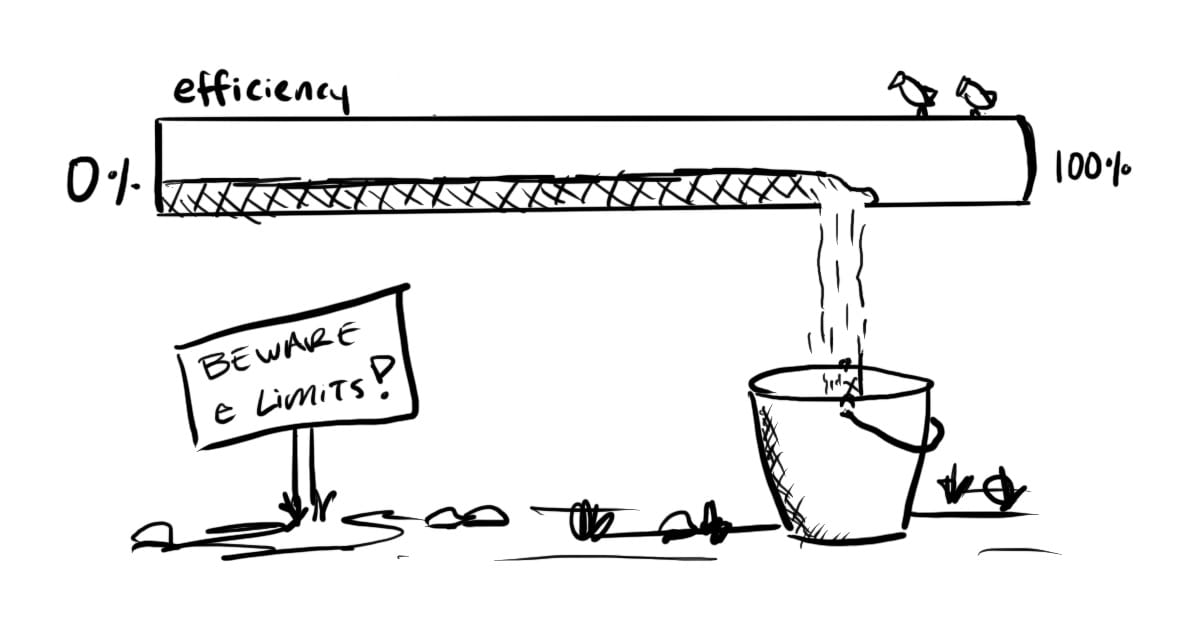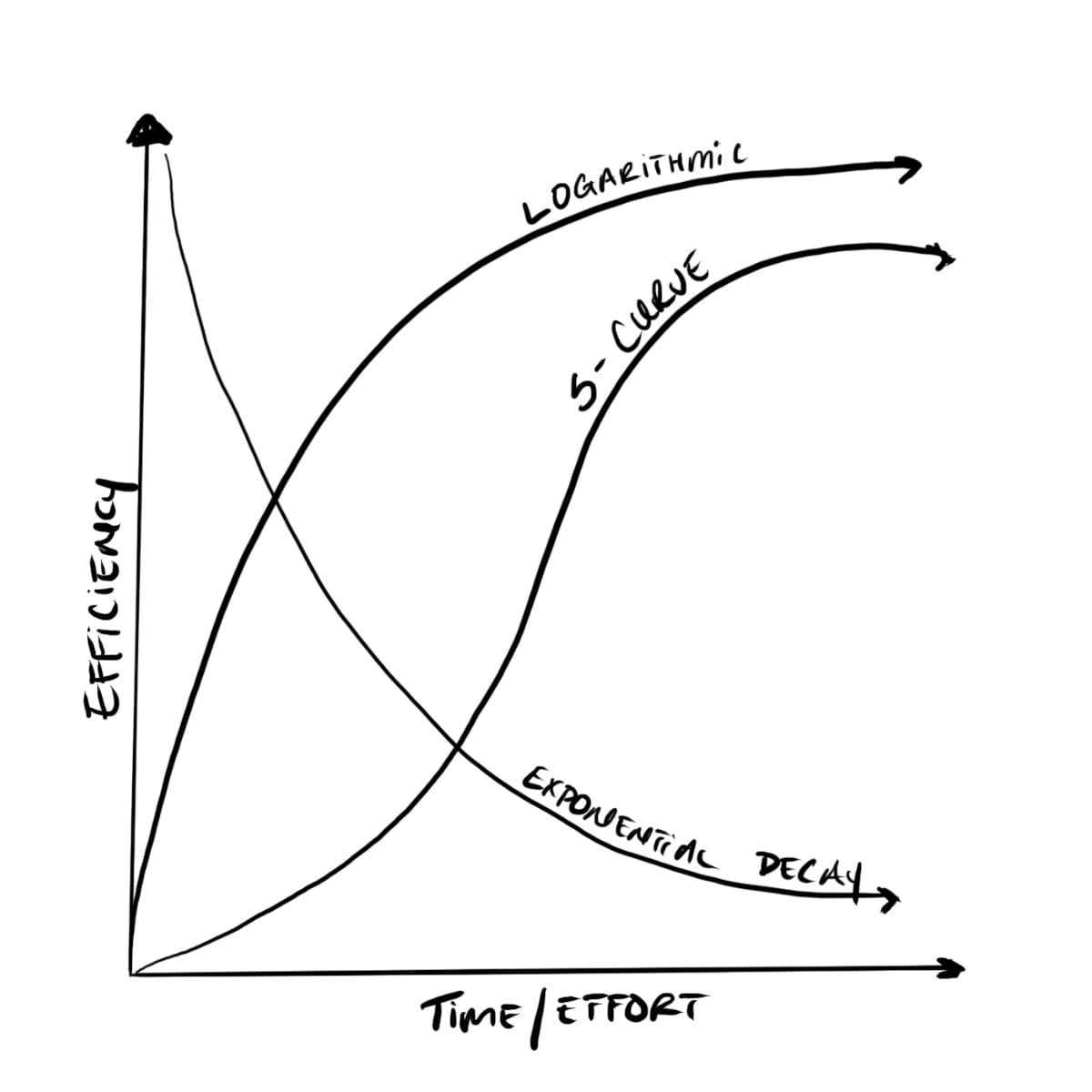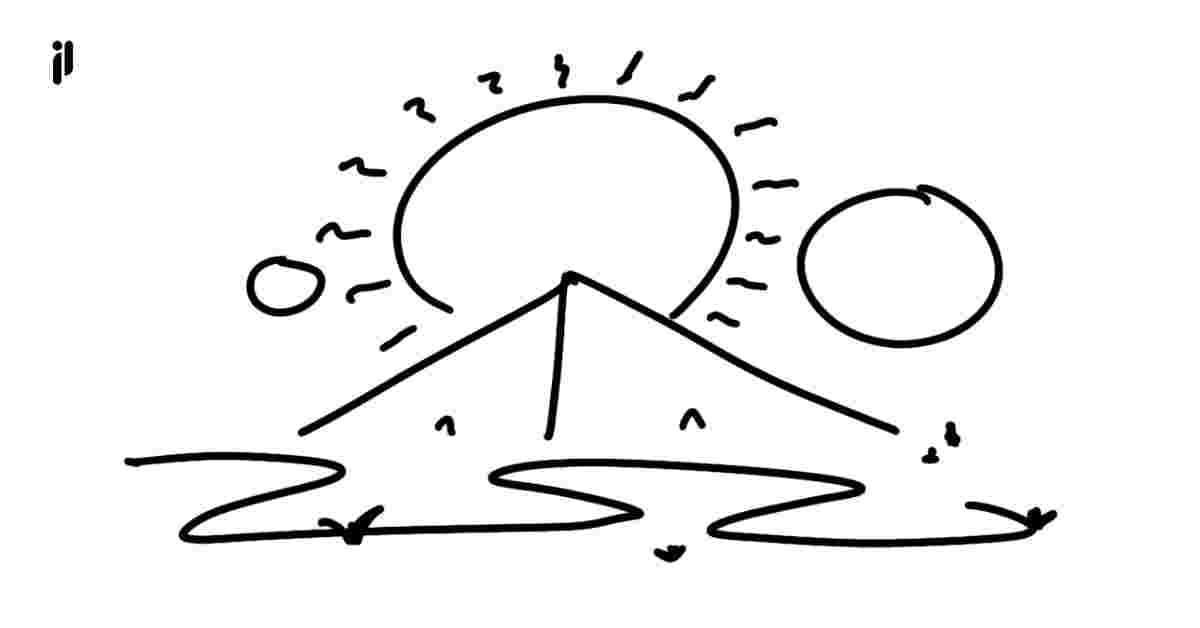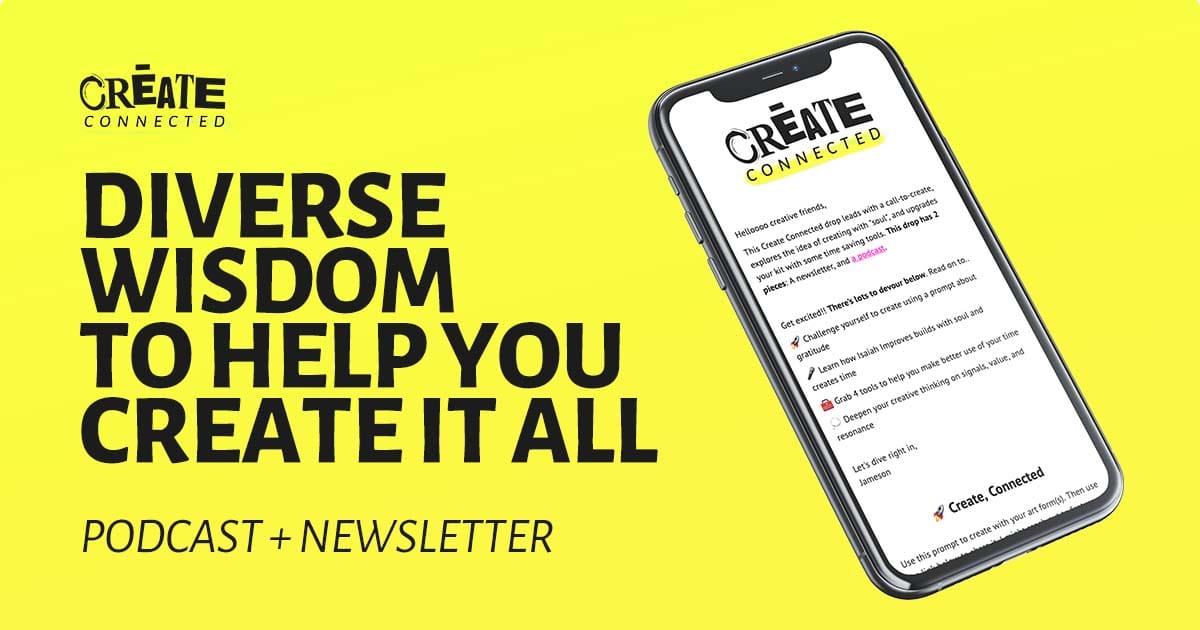Optimization Traps: Why more efficiency isn't always better
We’re all looking for ways to work smarter, but optimizing comes with its own set of risks. Here are 2 traps to avoid as you improve your efficiency.

We’re all looking for ways to work smarter, not harder. Whether you’re running marketing campaigns, developing products, or managing teams, the allure of new tools and technologies that promise more efficiency can be hard to resist.
Still, there are less sexy but essential questions you want to ask:
- What will it cost me to improve my efficiency?
- How efficient can I really be?
Many digital doers fall into the trap of thinking that more efficiency means more success. And, with literal auto-magic (automation + AI) at our fingertips lately, it’s more tempting than ever to think you can endlessly improve output and productivity.
The reality though is that chasing efficiency can often lead to diminishing returns and hidden costs that derail progress instead of driving it.
In this post, I’ll share how pursuing efficiency has its own set of costs, and how all systems have natural limits—or ceilings—that you’ll inevitably hit. This all suggests the following:
The key to being more efficient isn’t endlessly optimizing—it’s knowing when to stop.
As you read, I'll develop this claim with:
- A breakdown of the hidden time, monetary, and opportunity costs of improving efficiency.
- An exploration of natural efficiency ceilings and how to recognize when you’ve reached them.
- Practical advice on knowing when to stop optimizing and focus on what really matters.
By the end of this post, you’ll be better equipped to identify when efficiency gains are no longer worth it—and how to pivot toward more meaningful progress.
The Cost of Improving Efficiency
Improving efficiency sounds like a no-brainer. Who wouldn’t want to streamline processes, automate repetitive tasks, and free up time for creative work?
However, the pursuit of efficiency gains comes at a price that’s often ignored until it’s too late.
When people focus on optimizing, they tend to overlook the time, resources, and effort required to implement those optimizations. This is especially relevant today, where AI tools and automation platforms claim to bring radical boosts to productivity.
And in our output-crazed, hustler’s paradise of modern society, selling a product on claims of boosted efficiency is good marketing.
But these tools come with a harsh truth: Efficiency gains require significant upfront investment—both in terms of time and money—that go beyond the cost of doing the work that’s being optimized.
Imagine a marketing team rolling out a new automation tool to streamline social media campaigns. While it promises to save time on scheduling and tracking, the team spends countless hours integrating the tool, training staff, and fixing issues. All this happens before they can return to their main task—creating and executing their campaigns.
Now more than ever it’s easy to fall into the trap of thinking efficiency gains are free. They’re not. Here are some of their most common costs.
Breaking down the costs of efficiency gains
Once you’re aware of the hidden costs of efficiency gains, it’s easy to see they’re not just monetary. They involve time, focus, and the ripple effect on your other priorities.
- Time Costs
Any significant upgrade—whether it’s introducing marketing automation or optimizing development processes—takes time.Training sessions, workflow adjustments, and ongoing maintenance take away from core tasks like content creation, product design, or customer engagement.It’s not uncommon for people and teams to get stuck in “learning mode,” pushing back deadlines while they figure out the new tools. - Monetary Costs
Efficiency gains rarely come cheap. Automation platforms, CRM systems, or development tools often require upfront payments or ongoing subscriptions.Add to that the cost of consultants for implementation and training.The promise of long-term efficiency is appealing, but always weigh these costs carefully, and whenever possible, estimate how long it will take for the gains to pay off versus how long the improvement is expected to last. - Opportunity Cost
Perhaps the most overlooked cost is opportunity cost—the value of what you’re sacrificing while chasing efficiency.When a marketing team spends weeks refining automation or a development team dives deep into software integration, what work isn’t being done?Product innovation, audience engagement, and creative brainstorming often take a back seat. Don’t get so focused on efficiency improvements that you lose sight of the bigger picture.
The key is knowing when the payoff justifies the cost.
By framing efficiency as an investment, you can calculate its expected return on investment (ROI) and make more informed decisions on when to pursue improvements—and when to leave them alone.
The Myth of Endless Efficiency Gains
It’s tempting to believe that with enough effort, technology, and the right (read: magical) tools efficiency can be improved endlessly.
Reality has far less fairy dust.
Every system—whether in marketing, product development, content, or beyond—hits a point where further improvements don’t yield the same results.
These natural ceilings exist across numerous industries and domains, where chasing efficiency leads to diminishing returns—or becomes impossible altogether.
Understanding natural ceilings through efficiency curves
Efficiency doesn’t grow in a straight line. Different processes follow different curves, each with its own limit on how much more efficient it can become.
Here are some examples of natural efficiency ceilings I’ve encountered firsthand:
- Logarithmic Growth
In marketing, initial efforts to optimize ad targeting or refine email campaigns can yield fast results. But each new refinement leads to smaller and smaller improvements, eventually tapering off as it becomes harder to squeeze out more performance from the same tactics. - Exponential Decay
Automation can seem like a miracle at first—streamlining workflows and reducing manual tasks. But as these systems grow more complex, their efficiency can start to decay. For example, an automated customer service system that initially worked flawlessly may begin to falter as new inputs and variables complicate responses, eventually requiring more manual oversight to maintain quality. Time saved on customer service becomes time spent maintaining the customer service automation system. - Sigmoid (S-Curve)
Product development often follows an S-curve. Early efforts may result in slow gains, but once the team hit its stride, efficiency increases rapidly. However, that rapid rise eventually plateaus, with further gains becoming harder and harder to achieve due to design limitations or resource constraints.

Efficiency limits with AI
The recent surge in AI tools like large language models (LLMs) has reinforced the myth that endless efficiency is possible. Using tools like LLMs to speed up processes definitely improves the workflows they’re part of, but even this advanced tech faces the same natural ceilings.
It’s ever important to mind the myth of endless efficiency gains. As AI tools become more integrated into workflows, teams must recognize their limitations, knowing when to rely on human intervention and where AI improvements stop providing meaningful returns.
Recognizing these efficiency ceilings early can save your team from wasting time, money, and energy chasing gains that aren’t worth the effort.
Knowing When You’re Efficient Enough
It’s in vogue to be focused on endless productivity, and with that often comes the mindset that efficiency gains are worth pursuing indefinitely. But efficiency has a limit, and pushing too far can come at the expense of creativity, innovation, and overall effectiveness (not to mention sanity).
Sometimes, knowing when to stop and accept "good enough" can be the key to long-term success, preventing burnout and opening up opportunities for bigger wins elsewhere.
How to recognize an efficiency ceiling
Efficiency ceilings show up when additional effort no longer leads to meaningful improvements. Here are some signs to look for to help you avoid wasting time and resources:
- Diminishing Returns
This happens when each incremental improvement yields smaller results. For instance, in content creation, you might spend extra time refining SEO tactics or A/B testing headlines, only to see minimal improvements in engagement. In marketing, optimizing email subject lines might bring a slight uptick in performance, but it doesn’t justify the resources spent. - The Plateau Effect
When you hit a plateau, initial efforts may have brought noticeable gains, but now, further optimizations make little difference. In product development, the early phases of streamlining production processes might boost efficiency dramatically, but after that, improvements become smaller and harder to achieve. - Rising Costs for Minor Gains
When the cost of improving efficiency outweighs the benefits, you’ve hit a ceiling. For example, investing in new automation tools for content distribution might save a few minutes per task, but if the software costs more than the time saved, it’s no longer worth the effort. The same applies in product development, where further speed optimizations might save a few hours but cost significantly in resources.
What to do once you’ve recognized the ceiling
Once you’ve recognized an efficiency ceiling, or an approaching ceiling, it’s a good time to consider pivoting to other actions and activities that will likely have higher returns than pursuing more efficiency gains.
What those actions and activities are is totally dependent on the thing you’re trying to optimize. But here’s an analogy regardless:
Efficiency gains are like trying to squeeze more juice out of a given lemon.
Early on, you may get a surprising amount of extra juice with a few extra steps.
However—at a certain point—your time is (much) better spent by going and picking more lemons.
If there aren’t more lemons, then focus on squeezing more out of the lemons you have.
Recognizing when you've hit an efficiency ceiling and choosing to stop can save you from wasting time and resources, allowing you to redirect efforts toward innovation, quality, and long-term growth.
Conclusion: Reframing Optimization for Long-Term Success
Optimization (and the efficiency it brings) is an essential part of running any business or project, but as we’ve seen, the pursuit of endless efficiency comes with its own set of hidden costs and limitations, like:
- The cost of improving efficiency: While tools like automation and AI promise to save time, they often require significant upfront investments in terms of time, money, and focus. It's crucial to weigh these costs before diving in.
- The myth of endless efficiency gains: Every system—whether it’s marketing, product development, or something else—hits a point where further optimizations lead to diminishing returns. These natural ceilings limit how far efficiency can be pushed.
Efficiency is valuable, but it’s not the endgame. In fact, constantly chasing efficiency can distract you from other priorities like creativity, innovation, and even your well-being.
The key is knowing when to optimize—and when to stop.
By understanding the hidden costs of efficiency, recognizing natural ceilings, and balancing improvements with your long-term objectives, you’ll be better positioned to make meaningful, sustainable progress.
Instead of treating efficiency as the ultimate goal, use it as a tool to support your broader mission and allow room for growth where it really counts.
With gratitude 🙇
–J





